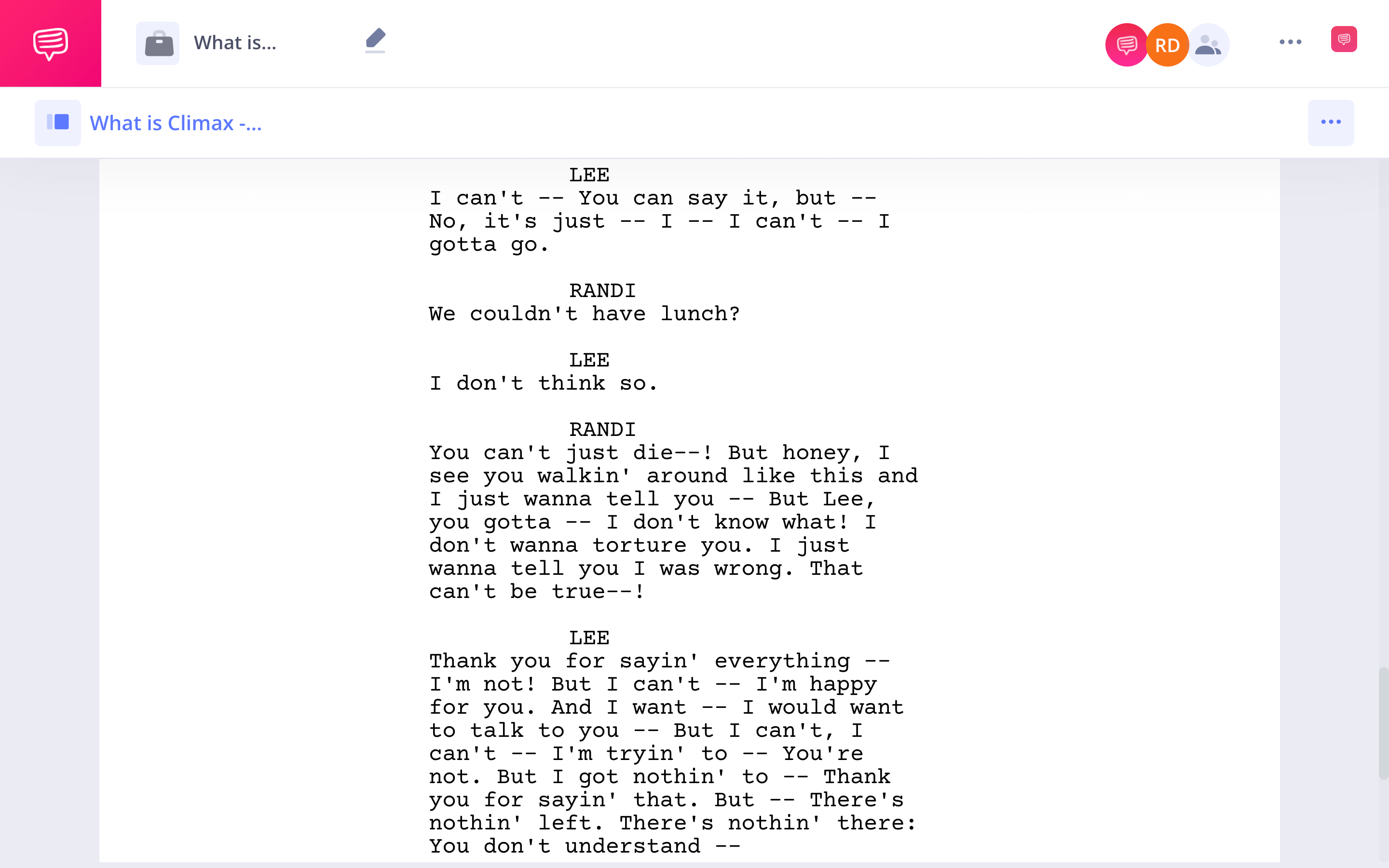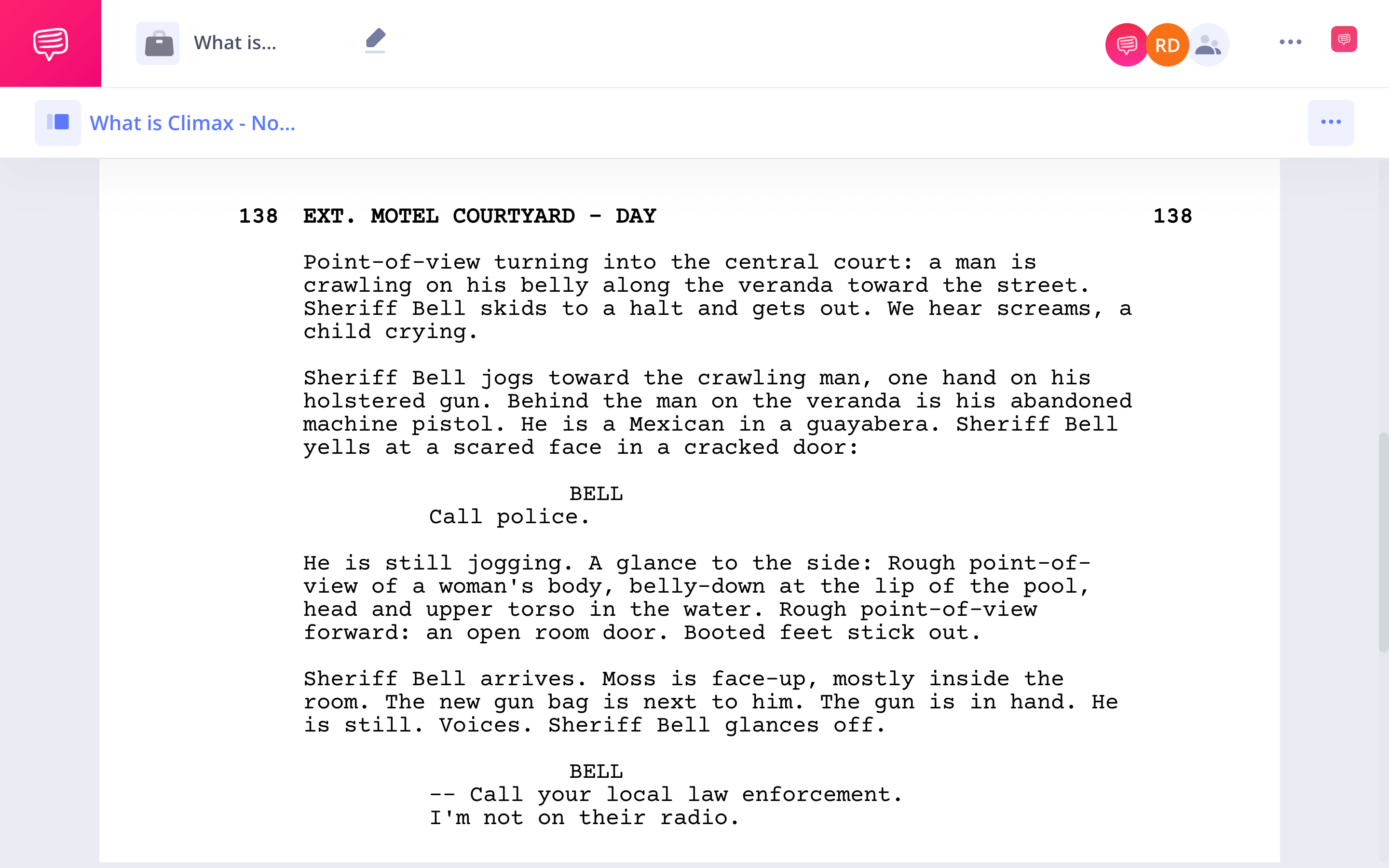A climax in storytelling is the most intense, exciting, or emotionally charged point in a narrative. It is the conclusion of an arc in which readers see the main characters make decisions and face obstacles that define who they are and what they stand for. The climax allows stories to build to increasingly satisfying resolutions or tragic endings. This blog will explore the different types of climaxes used in storytelling and how these create engaging endings for readers. Due to the sheer nature of a story’s climax, there are major spoilers ahead. That said, let’s dive in!
Watch: What is a Climax vs Anticlimax Explained
What is the Climax of a Story in Film?
First, let’s define climax of a story
Climaxes are important for stories because they provide narrative momentum and build tension to create a satisfying conclusion. Before we dive into the various types, let’s look at the climax definition.
CLIMAX LITERARY DEFINITION
What is the climax of a story?
The climax of a story is the point in the narrative where the tension, excitement, or stakes reach the highest level. It is often the conclusion of a story's main conflict and sets up for either a successful resolution or an unsatisfying ending. The climax can be subtle, like a twist of events that leaves readers thinking about new possibilities. It can also be bombastic and set off fireworks as characters fight for their lives and make emotionally driven choices. It often occurs near the end of the third act, where the value of the story is tested to its highest degree.
Climax of the story characteristics:
- Point of most tension
- Stakes are at their highest
- Protagonist makes a critical decision
Now, let's run through some of the main types of climaxes in a story. Some are shocking, some are emotional, and some are even moral.
What Does Climax Mean in Film?
Surprise climax
A surprise climax is when a story reaches a resolution or ending that is unexpected to the reader. It typically comes after an intense build-up and results in a twist or surprise that leaves readers feeling shocked and amazed.
A great example of this can be found in one of David Fincher’s best movies Se7en. The infamous “What’s in the box?” scene has become burned in viewers’ brains because of the incredible surprise climax. Spoilers in the video below.
SE7EN Climax Examples • "The Box"
This type of climax requires the author to carefully craft suspense and misdirection so that it can be effective and impactful. A surprise climax can also be used to comment on themes or explore philosophical questions about human nature, morality, life, or society.
Types of Climax of a Movie
Tragic climax
A tragic climax is a story ending that leaves the main characters in a state of sorrow or despair. This type typically involves death, suffering, and moral ambiguity as readers and viewers grapple with the events they have just read.
An incredible example of this is the non-linear tragic climax in the Manchester by the Sea screenplay. The many questions we have — what happened to Lee, will he overcome it, and how will he move forward from such a tragedy — are answered. We imported the script into StudioBinder's screenwriting software so we can examine how it was written and better understand its impact.
Manchester by the Sea • Climax of the Story
The scene is absolutely devastating as we tragically realize there is nothing left for Lee to save. Spoilers in the video below.
Manchester by the Sea • Climax of the Story
Tragic climaxes are often used to explore themes such as morality, justice, and courage in the face of tragedy. They can also be used to reflect on human nature and universal truths about life.
Related Posts
What is the Climax of a Story in Film?
Moral climax
A moral climax is a story ending that is used to reflect the moral values of the characters and the underlying themes of the story. This type of climax typically involves a significant decision or judgment by one or more characters that either upholds or challenges morality.
An example of a moral climax in the film is the ending of The Godfather. In the film, Michael Corleone must decide whether or not to take revenge on his enemies, despite it going against his morals and beliefs.
Ultimately, he decides to carry out retribution, illustrating how even a morally upstanding person can become consumed by violence and cruelty when pushed too far. For viewers, this moral climax explores the impact that power and revenge can have on human nature.
The Baptism Murders • Climax examples
Moral climaxes often explore philosophical questions about life, justice, human nature, and ethics. By challenging readers to think deeply about these questions, an author can explore complex themes in a meaningful way.
Related Posts
What Does Climax Mean in Storytelling?
Suspense climax
A suspense climax is a story ending that builds up to a moment of intense dramatic tension. Suspense climaxes often involve a life-or-death struggle between characters or forces, as well as a high-stakes decision that must be made in order to resolve the conflict.
An example of a suspense climax that completely subverts the audience’s expectations can be found in No Country For Old Men script, one of the Coen Brothers’ best films. Click the image to read the scene in its entirety.
No Country For Old Men • Climax of the Story
In a storytelling moment that is memorable for its complete disregard for convention, the suspense between Anton and Lewellyn and their cat-and-mouse chase climaxes in something completely unexpected.
No Country For Old Men • Climax of the Story
This type of climax creates an atmosphere of uncertainty and fear, heightening the reader’s anticipation for the outcome. By building up to this moment, an author can create an unforgettable experience for readers as they come to understand the implications of the characters' decisions.
What is the Climax of a Story in Film?
Ironic climax
An ironic climax is a story ending that presents a twist or surprise that is juxtaposed against the audience's expectations. For example, if the protagonist has been struggling to reach a certain goal throughout the course of the story, the moment when they achieve it may be undercut by an ironic outcome.
An incredible example of this can be found in Pixar’s Soul. While the goals of the protagonist Joe are clear throughout the film, when he finally achieves them at the film’s climax, the result is both surprising and thematic.
This type of climax can also be used to expose hypocrisy or an unexpected truth. By including an ironic element as its conclusion, a story can deliver a powerful message while still providing entertainment and twisty plot turns that keep readers on their toes.
There are many different types of climaxes in cinema. While some stories may opt for a traditional “Hero’s Journey” form, others may choose to go in a more unexpected direction.
Ultimately, it is up to the filmmakers to decide which type of climax will best provide an emotional response from their audience and make the story unforgettable. No matter what type of climax is chosen, understanding the options available can help filmmakers create an ending that ties together the narrative threads present throughout their entire film.
Related Posts
Up Next
What is the Three-Act Structure?
A climax is one component of the story structure. While there are various types of story structures, the three-act structure is one of the most fundamental. To learn more about it check out our next article.


